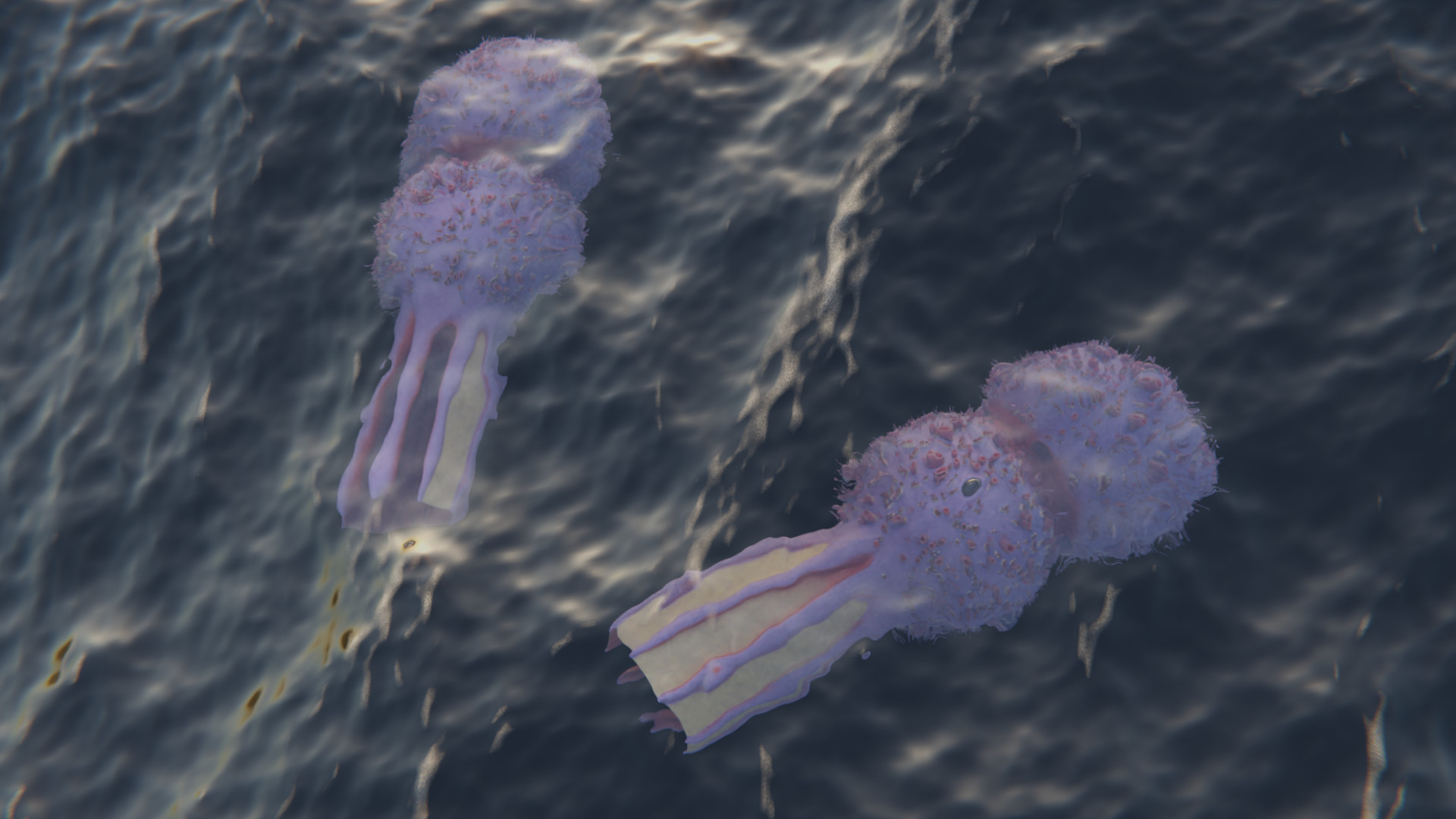Earth Jelly
Earth jellies fill about the same niche in the oceans of ancient Almaishah as mysticetes on earth. Like them they cary with them a whole ecosystem of endosymbionts and endoparasites, essentially carrying miniature reef systems with them as they travel across the globe. [creature design by Random Evo times]
Basic Information
Anatomy
Earth Jellies are still rather similar to their Ecoglobe ancestors in terms of general anatomy. They have 4 large eyes, each 90 degrees from each other. They also have 8 tentacles with two being different from the rest so they can nektonically swim through the water, a bell that acts like a teleost’s swim bladder and gills that efficiently extract oxygen from water. Six of the eight tentacles are connected by webbing which are used to capture prey.
Genetics and Reproduction
Earth jellies use the same reproductive strategy as the Ecoglobes; i.e. they cluster together during the mating season into these tangles of individual’s tentacles that trade gametes, with the newly hatched larvae clinging onto their mothers and feeding on what gets entangled on the protrusions, this time with a much higher survival rate from the shear amount of things covering the adults, they grow quickly reaching half adult size at 10 months, at which point they will go off on their own.
Ecology and Habitats
Just like their ecoglobe forerunners, earth jellies are mini ecosystems in their own right housing a wide array of species, even more so because of the amount of anchoring points for organisms to settle on and the shear size of the creature, allowing basically any reef species under 1 meter in size to settle on them. They truly live globally around the ocean, inhabiting shallow marine and open marine waters, along with being able to live in both tropical and polar temperatures.
Dietary Needs and Habits
They are filter feeders as adults, thus their mouth entrances are rather small so are unable to swallow anything larger than a couple centimetres. As juveniles, their mouths are much proportional larger than with adults, making them opportunistic omnivores that eat whatever is smaller than themselves on the back of the parent, even other juvenile earth jellies.
Biological Cycle
Earth Jellies have a net around most of their tentacles, which it uses its two undulating back tentacles to ram into a cloud of plankton, the net widens slightly and then rapidly closes, with thousands of tiny fine bristles lining the inside of each of them passing the food particles around between cilia until it reaches the mouth in the center of the tentacles, it then expels the water in a loud boom that can be used to scare off predators.
Additional Information
Geographic Origin and Distribution
Open water world wide.
Symbiotic and Parasitic organisms
Earth jellies as a result mostly of not having a choice carry with them their own small ecosystem, including many species closely related to reef organisms, such as octa corals, and various motile creatures, such as rose limpets and reef fish. While they gain little benefit from most, some are harmful, and some by feeding on the parasites are beneficial.











Comments